A request by @verdeviento@mander.xyz for some more info on talons.
Owls are a type of raptor. The origin of the word raptor comes from the Latin word rapere, which means “to seize.” That is because for a raptor, their feet are key to their survival. They catch their food, they’re used for grooming, and they’re the main line of defense.
Basic Anatomy
There are many differences in owl leg and foot anatomy when compared to other birds.
Owl foot and leg bones are shorter and thicker than other birds. This allows for a thicker muscular structure, even greater than that of most eagles many times greater in size. This sturdiness also helps the feet and legs withstand impacting their prey at high speed.
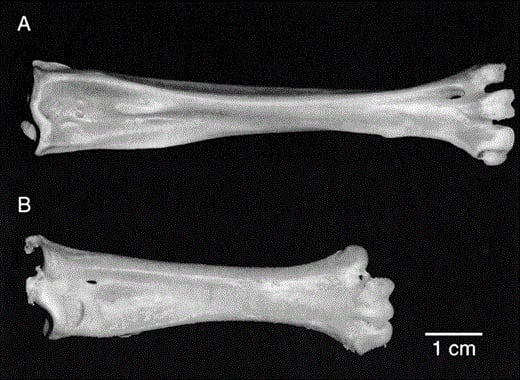 A is a hawk leg bone, B is an owl leg bone
A is a hawk leg bone, B is an owl leg bone
Another advantage owls over other raptors is calcification of the leg tendons. This hardening occurs in areas of high stress. It allows more structural support in areas that need it and serves as a calcium reserve should a bone injury occur. These structures are called sesamoids.
Owl tendons are also arranged in a way that they are tensed when the bird is relaxed. This is the opposite of how our hands work. To grip tighter, we need to exert more and more force, but the owl just has to use energy to release its grip. This allows them to exert maximum force holding onto prey with minimal effort. It is also what lets them stay gripped to their perch when they sleep without falling off. They must consciously let go to relax their grip.
This article has some good animations on the way the tendons lock up the grip. Animated gifs work for me on Boost, but not Liftoff so I’ll just put the link here so I know everyone can look at it.
Owls are zygodactyl, meaning they have toes that are arranged in a 2 rear facing / 2 front facing, as opposed to most birds which are anisodactyl, with a 3 rear facing / 1 front facing arrangement. Owl toes are also of equal length, as opposed to having one longer toe in front. Owls do have the ability to move their fourth toe to either the front or back to allow force to be distributed in different ways.
 Typical bird foot
Typical bird foot
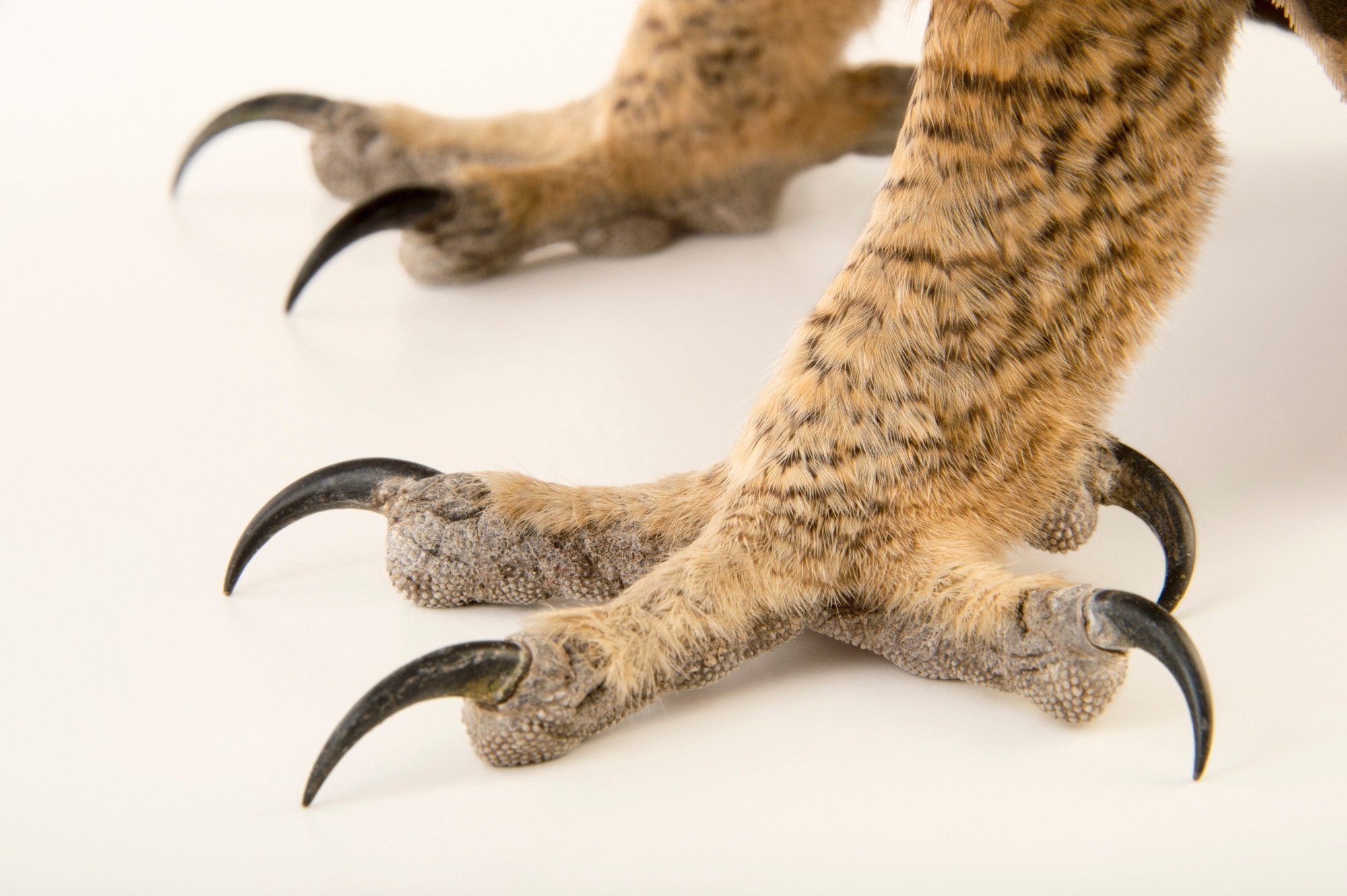 Owl 2 by 2 grip
Owl 2 by 2 grip
At the end of their toes are the talons. Owl talons are made of keratin, just like our fingernails. They have a hard outer layer and a soft inner layer, which makes them very hard, but also maintain some flexibility.
 Inner and outer talon layers
Inner and outer talon layers
Owl talons vary in size by species, but they are relatively long compared to their toe size. This increases the leverage in can apply. The Eurasian Eagle Owl has talons that can be up to 4 inches / 10 cm long.
 Eurasian Eagle Owl feet
Eurasian Eagle Owl feet
Grooming
Preening is an important part in owl grooming as it maintains the integrity of their feathers. Owls use their feet to arrange feathers, remove debris and parasites, and spread oils throughout the feathers.
Most birds have a ridge on their talons that aid in this, but the Barn Owls have evolved serrations that look and act like a comb.
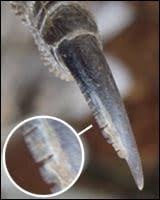 Barn Owl talon
Barn Owl talon
 Another view
Another view
Hunting
Why do owls hunt with their feet and not their beaks? Owls have short and rather weak beaks. The tip is curved and can generate a good amount of tearing force, but it is not good for offense or defense. By using the feet, they not only have much great mechanical advantage, they also keep any danger as far from their face as possible. Owl eyes and ears are their means of locating food, so they need to keep them protected.
Owls will swoop down on prey with their talons spread to allow the maximum grabbing area possible. Many hunt at night and cant actually see their prey, so this increases the odds of being on target. The 2 by 2 toe arrangement allows maximum gripping force to be evenly distributed. With the toe that can move from back to front, they can adjust their grip if they somewhat miss their mark. The undersides of the feet are also highly textured to add additional grippiness. The feet are also covered with many sensory nerves to detect vibrations in the air or on the ground, so that also helps them “see” without being able to see.
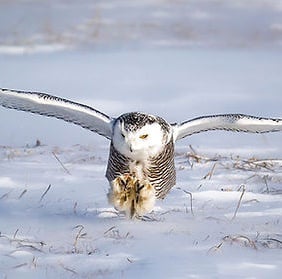 Splayed talons to increase grabbing area
Splayed talons to increase grabbing area
 Grippy surface of foot
Grippy surface of foot
Once they have their grip on their prey, they do not use their talons to kill like hawks or eagles do. All the combined mechanical advantage of their bones and tendons is used like a hydraulic press to finish off their prey. Most eagles and hawks have much less grip strength because they do use their talons to kill. A Bald Eagle only has half the grip strength of a Great Horned Owl, even though the eagle is much larger.
Owl grip strength is not to be overlooked. The Great Horned Owl is one of the strongest birds, with a grip strength approaching 500 psi / 3450 kPa. An adult human can grip around 150 psi / 1025 kPa. A pitbull bite is less than 250 psi / 1700 kPa, and only when we reach dogs the size of an English Mastiff do we reach dogs large enough to generate as much gripping force as a Great Horned Owl. To compare sizes, an adult Mastiff is over 200 pounds / 90 kg, where a GHO weighs 3 pounds / 1.4 kg.
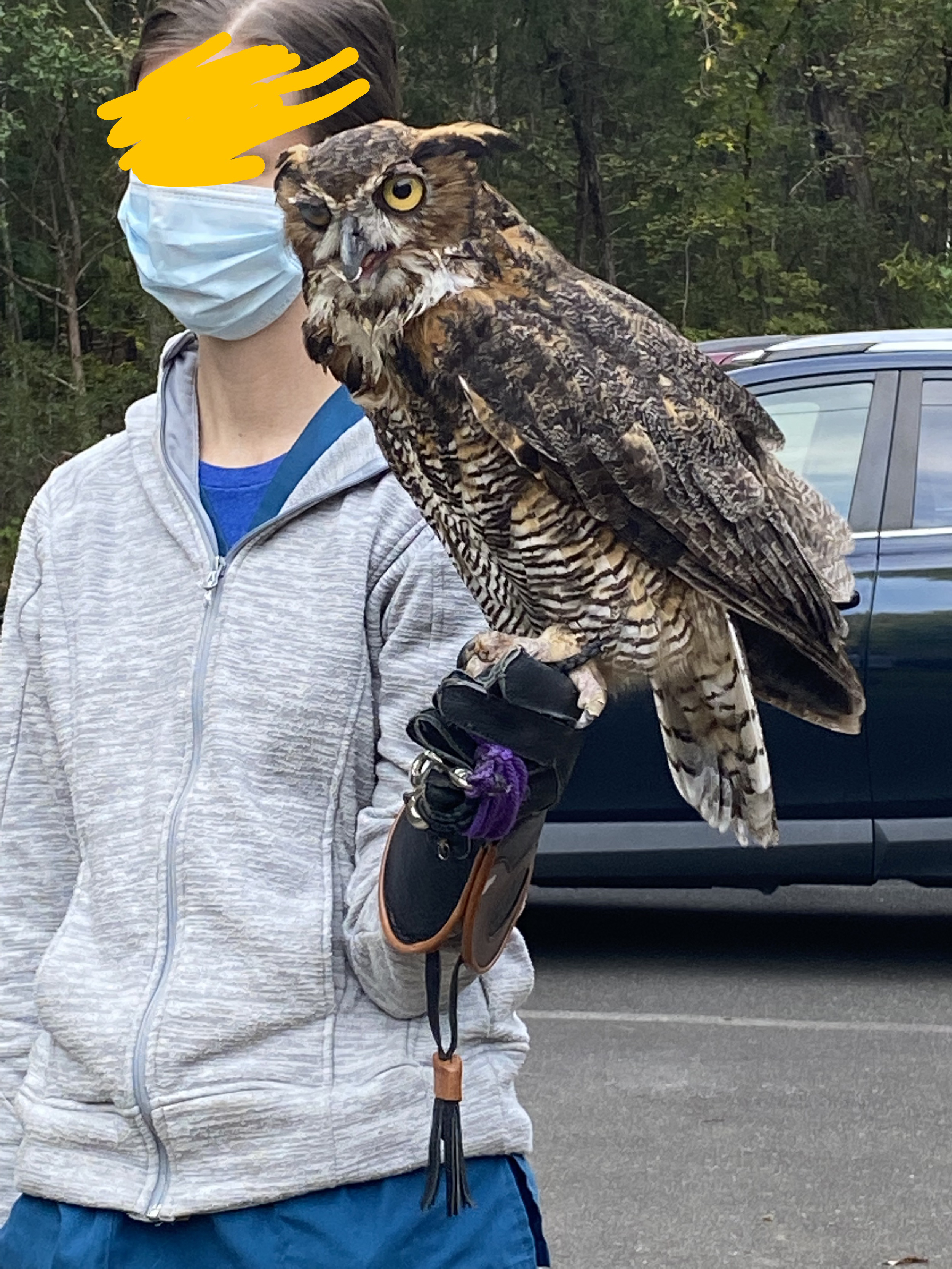 GHO vs Mastiff size comparison
GHO vs Mastiff size comparison


The texture of those feet kinda scares me. It’s probably nothing like I imagine though. I was already surprised by parrot and pigeon textures. I kinda imagine the owl foot bristles to be wiggly but it’s probably actually sandpaper or cat tongue ish for better mouse grabbing.
I’m also curious about how an owl smells. I sniff all my birds every day.
One other person in the comments compared it to snakeskin. I’m very curious to find out myself now. I feel it’s got to have some specific texture to it since it’s a survival feature for them.
I’ve never given thought to hire a bird smells, but reading about the preening gland the other day, it definitely looks like something that would have some kind of smell. I’ve come across a few animals that get distinct smells from their scent or oil glands, so birds probably do too.
My cockatiels smell like fresh paper towel rolls, my pigeon smells like down pillow washed with unscented detergent and dusted lightly with sand, one of the Senegals smells like tree resin. The rest of the birds are kinda stinky but I can’t help but sniff them anyways…
I’m slightly scared that owls might smell bad based on what they eat, but they might also not have much of a smell for stealth.
I appreciate your curiosity! I feel people don’t take advantage of the sense of smell near as much as they should.
It’s also a good way to check on the health of your animals, since they can’t communicate well and tend to hide it when they’re sick. That is how I found out my first cat was having kidney problems.
Owls can’t really smell, so they could stink like whatever and not care. I’ve never noticed anything of smelling about them from a few feet away, so they’re not as stinky as a fox at least, but I’ll have to make an effort to see if I can detect anything next time I go visit some owls.
I always wished sites like wikipedia consistently had information on how things smell. It’s something kinda hard to describe in a way that others would understand though.
Smells are probably a bit too subjective, like taste. Like people that love/hate cilantro.
I think we’ve lost the necessity of actively smelling and tasting since in modern society we don’t need to worry near as much about food safety. We can eat pasta sauce, but can we tell what kind of tomato it’s made from, or pick out what herbs have been added?
Active smelling at tasting can be a fun hobby or even career. Sommeliers, whiskey/coffee/cigar afficienados. Those types of people are trying to max out that smelling and tasting ability.
PS, I do appreciate your willingness to be open about being a smeller of weird things! People look at me weird when I smell unusual things, but again, we learn by using all our senses. Why ignore some of them?
Bird odour: camouflage or communication?
I think you will find this very interesting!
That’s cool. I think the seasonal change affects love birds since once in a while they become not stinky. Both times you have to put your nose pretty much right on them to smell them though.